Traveling With Firearms – Part 1
November 21st, 2016 by BTC Editor
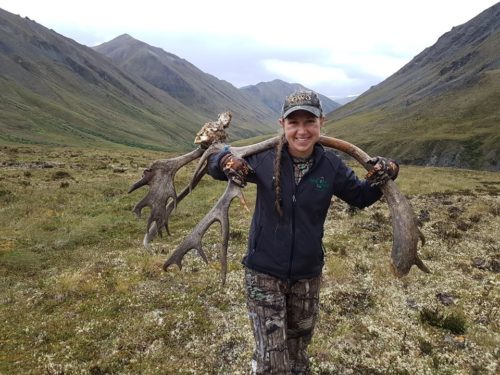
Hunting trips are times to relax, be one with nature, enjoy the great outdoors and camaraderie with like-minded peers, and bond with family. No matter the reason for your hunting excursion, quarreling with airlines over firearm transportation is the worst way to start your journey. Here are a few tips to help you start your trip on the right foot.
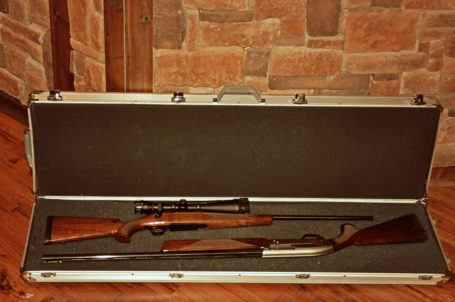
First and foremost, firearms must be transported in a hard case. There can be multiple guns within each hard case, but it must be a hard case. Next, in conjunction with the hard case, the case must be able to be locked securely. Most cases have reinforced locations for two locks, some have a metal rod with one lock. If there is a place for two locks, many airports require both locks. Even if your departure city airport does not require both locks, when you leave your hunting destination that city airport might require both locks. It’s best to cover all bases and have all locks in place.
Secondly, firearms must be transported unloaded. Make sure you double check that the magazine is not in the gun and the barrel is clear. The bolt/action can be transported in the gun, but the gun must be clear of ammunition. Though the firearm must be clear of ammunition, ammo can be transported in the case with the firearm.
Finally, firearms are checked baggage. Just like other checked baggage make sure you know the weight limits associated with your airline. Most have a 50 pound limit, but double check before hand so you do not have any trouble at check-in.
Lock your empty firearm in a hard case and enjoy your vacation. Bon voyage!
By Lora Gene Young
Lora Gene Young is an avid outdoors-woman from North Carolina. Lora guides hunts in both New Zealand and Australia and is also a member of Huntress View, an organization formed to help strengthen the ever growing community of women hunters.
10 Pheasant Hunting Safety Tips
October 16th, 2016 by BTC Editor
10 Pheasant Hunting Safety Tips
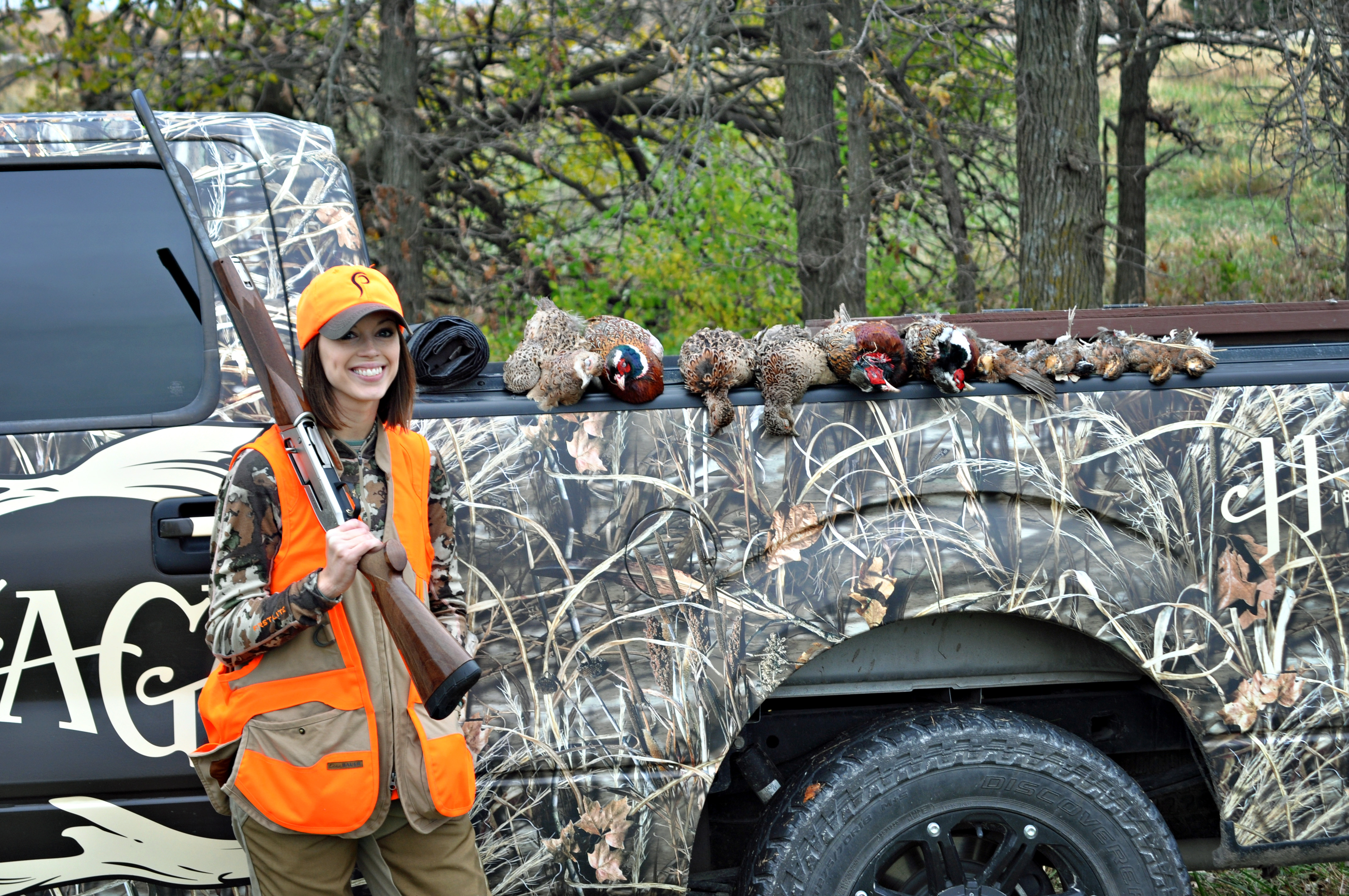
I’ve only been pheasant hunting for about 4 years now, but one thing that has been clear to me from my very first hunt is the importance of safety. It’s your responsibility to handle your firearm safely so you keep yourself, your hunting buddies, and the hunting dogs safe. After witnessing a couple of accidents on my hunts (luckily nothing serious), I feel it’s important to share a few safety tips.
- 1) Always point the muzzle in a safe direction.
- 2) Don’t rely on your shotgun’s safety feature alone to prevent an accident. Keep your safety on and finger off of the trigger until ready to shoot.
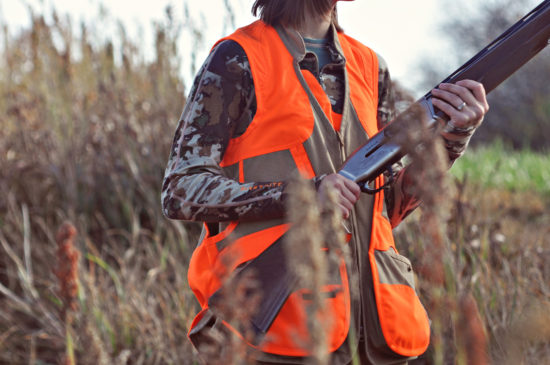
- 3) Start each hunt with a few safety reminders. It may seem monotonous after hunting for years, but it’s something that needs to be reinforced each hunt.
- 4) Know where your hunting partners and dogs are at all times. One of our hunting partners ended up getting shot in the arm one year because he was downhill from the group who was walking out a field and he failed to tell anybody. Luckily he was far enough away that it didn’t cause much damage, but it could have ended very badly.
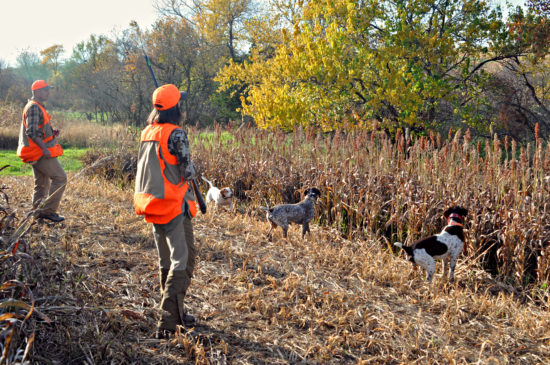
- 5) When walking out large fields make sure you and your hunting partners stay in an even line, paying attention not to get too far ahead or behind so no one is in the line of fire.
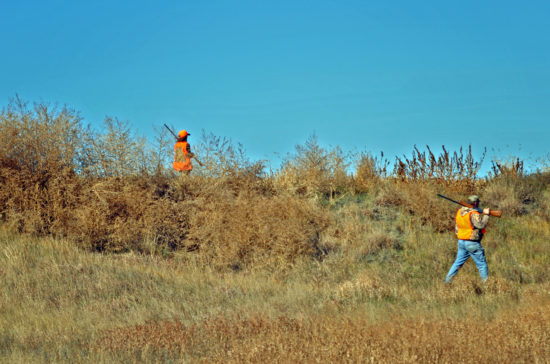
- 6) Make sure your shotgun barrel is free from obstruction. Have you ever been walking out a field and fall into a badger hole, smacking the end of your shotgun barrel into the ground? Well, I have a couple of times. My hunts could have taken a wrong turn after that had we not checked my barrel and cleaned the mud out.
- 7) Make sure you aim above the horizon and see sky before you pull the trigger. When a pheasant flushes the dogs will often jump up and try to catch it. It would be horrible to shoot a dog or a person, so always make sure you let the pheasant get up high enough before shooting. If you don’t have a clear shot, just pass.
- 8) Make sure you are putting the right size shell into your shotgun. For example, never put a 20 gauge shell into a 12 gauge shotgun.
- 9) Never climb/cross a fence with a loaded shotgun.
- 10) If your shotgun fails to fire, wait about 10 seconds, keeping it pointed in a safe direction and your finger off the trigger. Unload the gun and dispose of the ammo.
As with any hunt, safety when handling your firearm is the most important thing. Accidents are few and far between, but just remember that they can happen to anyone at any time. Remembering the above tips will make your pheasant season more safe and enjoyable for all involved.
By Andrea Haas
Andrea Haas is a Pro-Staffer from Missouri who enjoys hunting deer, turkeys, and upland birds. She is also the founder of the Huntress View, an organization formed to help strengthen the ever growing community of women hunters.
